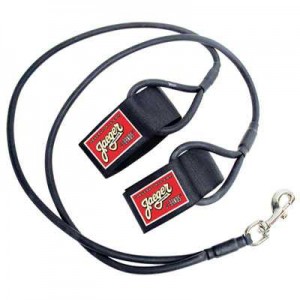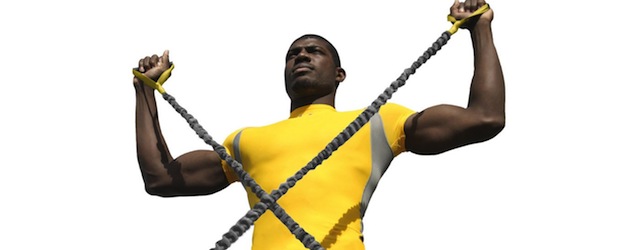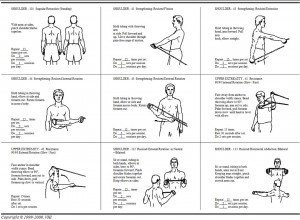If you are looking for a more thorough program on how to take care of your throwing arm, check out the eBook ARMing for Success.
Today’s task in the 21 Day Challenge is to begin a proactive approach to protecting you number one asset: your shoulder.
It may seem obvious, but many ballplayers do not take arm care seriously. If you play baseball, your shoulder is your lifeline. You cannot play the game if you cannot throw.
The shoulder is one of the most mobile joints in the human body. While mobility is a great attribute for the overhead thrower, it is also a big cause of why the shoulder is a very unstable joint. With all of the instability present in a normal shoulder, imagine the instability in a baseball player’s shoulder as he throws a baseball. Instability equals higher risk of injury. You must protect your arm.
Band Work for Baseball Players
While many college and professional athletes and coaches know the benefits of resistance tubing, many high school and youth ballplayers, their parents, and their coaches do not utilize tubing as part of a healthy arm care program.
Resistance tubing exercises have shown a huge benefit in baseball players (and all overhead athletes for that matter) by improving strength, proprioception, muscle performance characteristics, athletic performance, and injury prevention.
Types of Tubing Equipment

One of the biggest proponents of resistance tubing exercises is Alan Jaeger, a big time supporter of long toss and creator of Jaeger Sports. In fact, Jaeger has designed his own surgical tubing known as J-bands and uses them religiously with each of his players prior to any throwing. With J-Bands, players perform a series of exercises designed to warm-up and strengthen the rotator cuff. Only after using J-Bands does Jaeger allow his athletes to throw. J-bands are a phenomenal piece of equipment and one that you should strongly consider putting in your baseball bag.
Another quality piece of resistance tubing equipment is called Crossover Symmetry. Again, these are another form of tubing and also includes full exercise cards and two DVDs on how to use the system. The Crossover Symmetry system is also portable but will take up a little more space in your bag.
If either of these systems has you thinking twice for whatever reason, you can go the more simple route and pick up some basic resistance tubing online or at your local sporting goods store that will allow you to perform some of the more basic tubing exercises.
Tubing Exercises
There are a variety of different tubing exercises you can perform when using resistance bands, and the J-Band system and Crossover Symmetry each have their own routine and are excellent choices. However, if you do not have access to these systems or you are unsure of exactly what exercises to perform, you can use the following shoulder routine to get you started.
Perform the routine above prior to any throwing or training session. Do not worry about the resistance of the band when you first start. Instead, your focus should be on execution of perfect form and movement. Stay consistent with your routine and understand its importance. Many ballplayers will end up skipping their shoulder work or just go through the motions and not receive the benefits of implementing a shoulder program. But if you make your shoulder tubing exercises a part of your normal routine, you will start to see the difference in not only how you feel, but also how you perform.
 ARMing for Success
ARMing for Success
Want more information on band exercises and how to set up and approach a throwing program? Check out ARMing for Success where you will learn a complete dynamic warm-up, 7 essential band exercises for the throwing shoulder, and how to set up your long toss program. You need a game plan when you hit the field, and ARMing for Success will give you the guidance you need. Check it out now!














3 responses to “Protect Your Shoulder”
Good stuff Phil. Just as we take our players thru lower body dynamic warm-ups, tubing
is a great modality to dynamically warm-up the shoulders and upper body, before throwing or prior to a strength training session.
Adam
Thanks for the comment, Adam. You’d be surprised how many high school ballplayers I work with that have never been taught how to do basic tubing exercises. Or, just outright skip over them because they are “boring” or do not challenge them enough.
Consistency and attention to the the small things make big differences in an overall game plan.
[…] to picking up a baseball. Athletes should begin each session with a dynamic warm-up, followed by specific shoulder work with tubing, and finally move into the throwing portion of their session. Never just pick up a ball and start […]